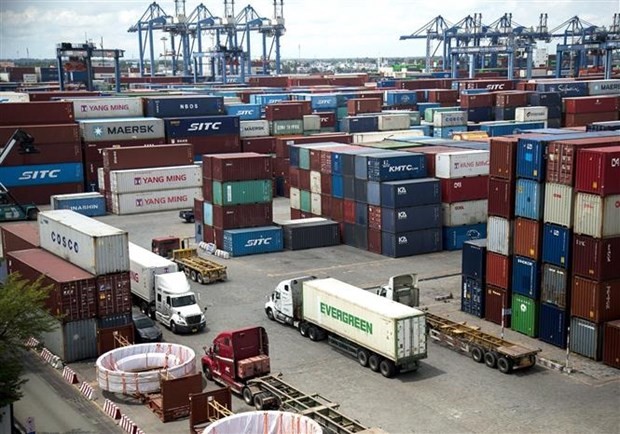 |
Vietnam-Chile trade reached US$2.15 billion in 2022. Illustrative image (Source: VNA) |
According to the Ministry of Industry and Trade (MoIT), the Vietnam-Chile trade has expanded impressively over the recent years, reaching US$2.15 billion in 2022, a year-on-year rise of 9 percent , including Vietnam’s exports of US$1.72 billion.
In 2011, the Vietnam-Chile Free Trade Agreement (VCFTA) was signed and went into effect on January 1, 2014, greatly contributing to promoting trade between the two countries. Under the deal, Chile abolishes 99.62 percent of the total tax lines for Vietnamese exports in 10 years, while Vietnam also erases 87.8 percent of tax lines for Chile in 15 years.
Due to the global crisis, two-way trade growth is slowing down. In the first five months of this year, the figure dropped to US$696.7 million, down 25.1 percent year on year, including Vietnam’s exports of US$501 million.
However, Vietnam is still the largest trade partner of Chile among the ASEAN member countries, according to the MoIT.
Vietnam is also a gateway for Chilean goods to enter the ASEAN market, while Chile is expected to help Vietnamese products penetrate the North American market.
Especially, in the beginning of 2023, Chile approved the Comprehensive and Progressive Agreement for Trans-Pacific Partnership (CPTPP), which is expected to bring about a new breakthrough growth in the Vietnam-Chile trade ties.
The MoIT has proposed that the two sides roll out measures to boost two-way trade by making full use of advantages from the CPTPP and the VCFTA, diversifying the imports and exports and creating favourable conditions for the market opening process in each country.
It also suggested that the two countries strengthen cooperation in fundamental industries such as materials production, metallurgy, mechanics, processing-manufacturing and electronics, while negotiating and signing new deals in trade promotion, and tax and customs, thus creating a legal foundation for cooperation activities.
At the same time, the two sides should strengthen the provision of market information to each other, foster collaboration in e-commerce, and strengthen IT application and digital transformation in trade promotion activities to increase connectivity among the two business communities, the ministry suggested.
























